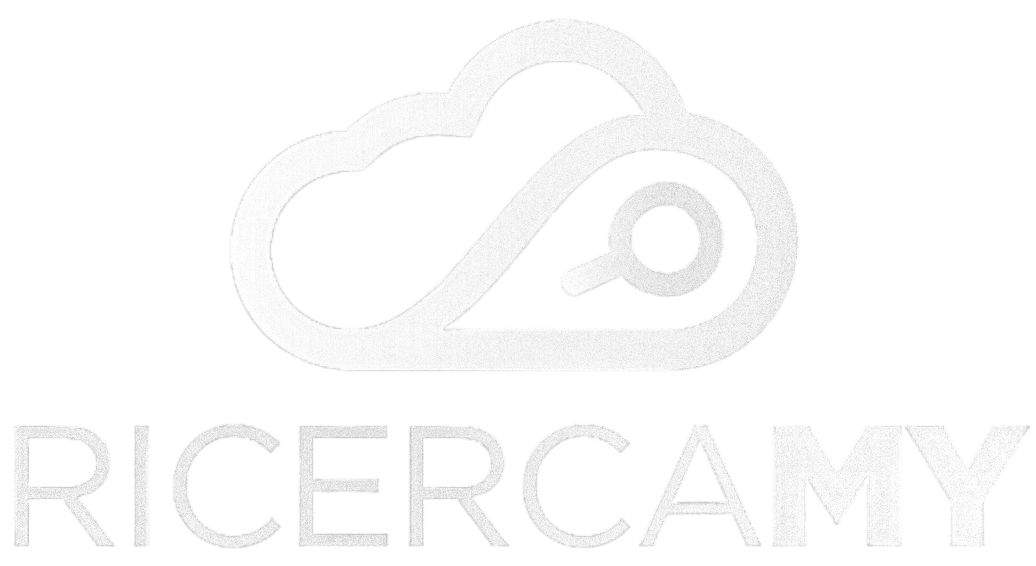Are you looking for a Transformation Manager but are finding it difficult to recruit one? Have you relied on recruitment companies but have not had the expected results?
In this article we explain who this figure is and what he/she does and the advantages of turning to Ricercamy as a partner in the search and selection of profiles in the sector.
But what does business transformation mean and how important is the role of the Transformation Manager within organisations?
Business transformation is a change management strategy that can be defined as any shift, realignment or fundamental change in business operations. The objective is to make changes to processes, people or systems (technology) to better align the company with its business strategy and vision.
Change is an inevitable but hated aspect of a growing business, but there is no need to adopt a ‘resistance is futile’ attitude to get people on board. Change management models are designed to act as compasses to help navigate difficult transitions and guide you and your team towards accepting and adopting change.
Moving from one video conferencing system to another may seem like an easy change, but anyone who has been forced to make that transition can tell you that small frustrations like having to search for the screen share button or navigate through mic-muting options can lead to a serious aversion to the new tool. Change management models prepare you for resistance and guide you and your employees towards a successful implementation of change.
Change management models are concepts, theories and methodologies that provide an in-depth approach to organisational change. They aim to provide guidance for making changes, navigating the transformation process and ensuring that changes are accepted and implemented.
Whether these changes apply to new hires learning business processes, company-wide changes involving internal tools, department-specific changes, or anything in between, change management frameworks are designed to make changes easier to implement and, more importantly, to solidify change as the new norm.
How are situations addressed in which different pressures for change (internal vs. external, in particular institutional pressures) require defining/redefining the business organisation according to different criteria?
Organisations activate organisational transformation programmes typically using two approaches:
a reactive response to exogenous and endogenous stimuli
a proactive response by anticipating the stimuli or by implementing well-defined structural steps following outlined strategies.
In both cases, however, the most typical approach with which the definition/redefinition of the company organisation (partial or total) is managed is that of setting up a task force, assigning responsibilities to organisational units (typically the Organisation structure, if it exists, or the Personnel Department, or the business unit responsible for the change) and consequently organising an ad hoc project. It is in this context that the Transformation Manager comes into play.
Who is and what does the Transformation manager do
The Transformation Manager is an expert capable of accompanying companies towards the path of change. His real task is not only to introduce the change but he is also responsible for ensuring that this change is also reflected in the corporate culture, aligning people to the processes and then knowing how to support them during all phases.
From the outset, the Transformation Manager is the person who must be able to listen to and analytically identify the current state of the company, touching with his own hands those processes that most of all need profound adjustments to be oiled and perfected, and then assisting people in becoming in turn protagonists of the change underway.
For this reason, it is important that he/she obtains full confidence and ample room for manoeuvre from the company decision-makers. In order to make change possible, it is essential to involve the entire corporate ecosystem from the very beginning: employees, customers, stakeholders and, above all, managers and owners.
In a second step, the Transformation Manager has to probe the company departments for problems, needs and requirements. He looks in particular for deficits of a mechanical nature, i.e. those repetitive processes that can be streamlined or made more strategic.
He who deals with change in organisations knows that digital transformation comes from people. His task is also to sift through any resistance – educational and cultural – within the company. He tries to understand the level of openness to change of the people involved, so that he can also act on them.
On the basis of what has been gathered, he then draws up the objectives of the path and estimates its impact on company performance. It must therefore give a value – numerical and economic – to what emerged in the cognitive phase, and then plan the transformation in the direction of the set objectives.
Taking care of data as a necessary element for defining a transformation strategy is a crucial step: the possibility of having predictive information on which to base context analyses and improvement actions is one of the most concrete advantages to be brought to the attention of companies.
After listening and analysing, we move on to action. In this phase, the Transformation Manager puts in place all the measures to improve business processes – internal and external – through technology.
The vision of the process must cover the whole company, not just isolated areas or particular sectors. Don’t think of digital transformation as a simple patching up of small or peripheral problems. An example? A company that enhances the customer experience without taking equal care of warehouse management risks seeing all its efforts thwarted simply because of an imbalance in the resources brought into play.
Implementations must:
Automate repetitive processes, with benefits in terms of speed, efficiency and error reduction.
Computerise, i.e. support processes with new artificial intelligence systems.
Dematerialise to make processes sustainable and encourage sharing between people.
Virtualise, i.e. move the various physical resources in the company to a single centralised dashboard.
Shift to innovation, to boost productivity with the help of more flexible and people-friendly technologies
Models and Tools used by the Transformation Manager
Following a proven method for introducing and establishing change will increase your success rate in change management. There are a variety of established models; the challenge is to find the one that works best for your situation.
Some models are better suited to large-scale, organisation-wide changes, such as moving all customer management from a variety of programmes into a centralised system within Salesforce. Smaller changes, such as changing the format of monthly customer progress reports sent by the marketing department, might be better suited to a less complex model.
These leading models have proven to be effective. As you consider each of them, be open to using more than one method, sometimes simultaneously.
In this article we find a review of 10 change management models applied in different organisational contexts that have given interesting feedback.
Talking instead about tools that the Transformation manager uses in managing his change processes, we can see several of them. I report some of them:
Whatfix
BMC Remedy Change Management 9
StarTeam by MicroFocus
Rocket Aldon
ChangeGear Change Manager
Giva eChangeManager
ServiceNow Change and Release Management Application
Freshservice
Howspace
The Change Compass
The Change Shop
Gensuite
Viima
OrgMapper Influence
jTask Pulse
What skills should a good Transformation Manager have
The skills that need to be assessed to identify a good Transformation Manager include:
Preferable background in Business Administration, Supply Chain Management, Industrial Engineering, Finance, Administration or Economics.
5 to 7 years’ solid experience in strategic consulting and organisational process management
Advanced project management skills, experience in leading multiple cross-functional and multidisciplinary teams.
Proven experience in operational management and maintenance tasks.
Experience in logistics contexts or related to manufacturing, supply chain, industrial contexts.
Ability to lead, guide and coach project team members in areas such as production, maintenance, reliability,
Ability to conduct analytical studies in multiple areas, for the right strategic project definition and associated recommendations.
Ability to interpret financial and P&L statements
Ability to effectively design, achieve alignment and successfully execute significant project change initiatives from start to finish
Excellent oral and written communication skills, and ability to interact effectively with all levels of management.
The ability to prioritise, manage time effectively, solve problems appropriately and maintain confidentiality of information.
Obviously important soft skills complete the profile, such as: aptitude for teamwork, pro-activity and creativity, good organisational skills and result orientation.
In the IT sector there is strong competition on the market and speed in contacting them and a study of salaries are the bases for optimising a selection process.
Ricercamy, a revolutionary and dynamic head hunter, born in March 2012, has, since its inception, been committed to introducing innovative elements into the world of Search and Selection that would improve the redemption of Recruiting activities.
According to a study by Linkedin, 75% of talents are passive and already working, not proactively looking for new professional opportunities. Only 25% of them are more consistently interested in actively searching for new job offers. Therefore, investing the company’s budget in subscriptions and/or offers from job posting platforms cannot be the only effective solution.
It is necessary to adopt a methodology that allows us to reach the best candidates: headhunting calls!
This is how our specialised headhunters find qualified staff for our clients.
Our consultants’ anonymous calls are able to intercept any profile with different seniorities.
Through a very thorough and technical telephone pre-screening, in addition to the personal data, we collect all the specifications on the candidate’s experience necessary to assess its validity and thus allow the candidate to access the next step.
All of the above is carried out and shared in real time via a cloud file in which it is possible to work hand in hand with the client company’s human resources representative, who does not have to wait 2-3 weeks to receive the first shortlist of valid profiles, but just a few hours!
Transparency and immediate sharing is a distinctive trait of Ricercamy, which has specialised over the years in the search and selection of technical figures in the IT field, thanks to the development of specific skills and knowledge of the profiles sought and the reference market.
By searching for personnel on a daily basis, our headhunters have acquired know-how and specialisation in their sectors, which allows us to be leaders in this market crowded with recruiters.
On the strength of our tools, since its inception, Ricercamy has helped from the smallest IT Start-Ups, to the large IT Colossi in the selection of qualified personnel who are difficult to find and to place. Thanks to our SMART commercial offer, our clients ask us to carry out selections that they have always tended to do internally, but since we have certain costs and do not provide completion fees or exclusivity, they feel free to delegate to us the management of their vacancies, or those more difficult or repetitive activities, thus lightening their workload.
If you are also looking for these profiles, don’t wait!
Fill in the form below and you will be contacted within an hour by our specialised consultants.
Martina Frangiolini
HR Consultant
Ricercamy







